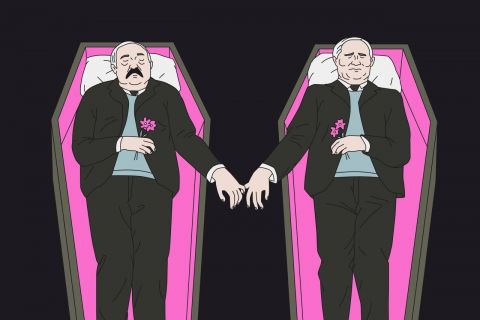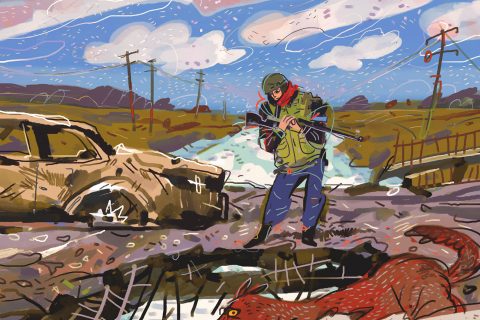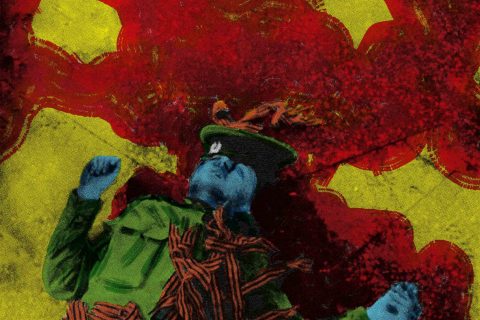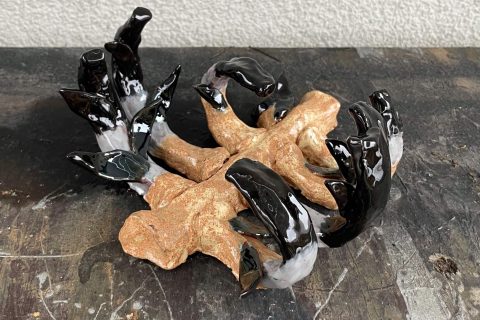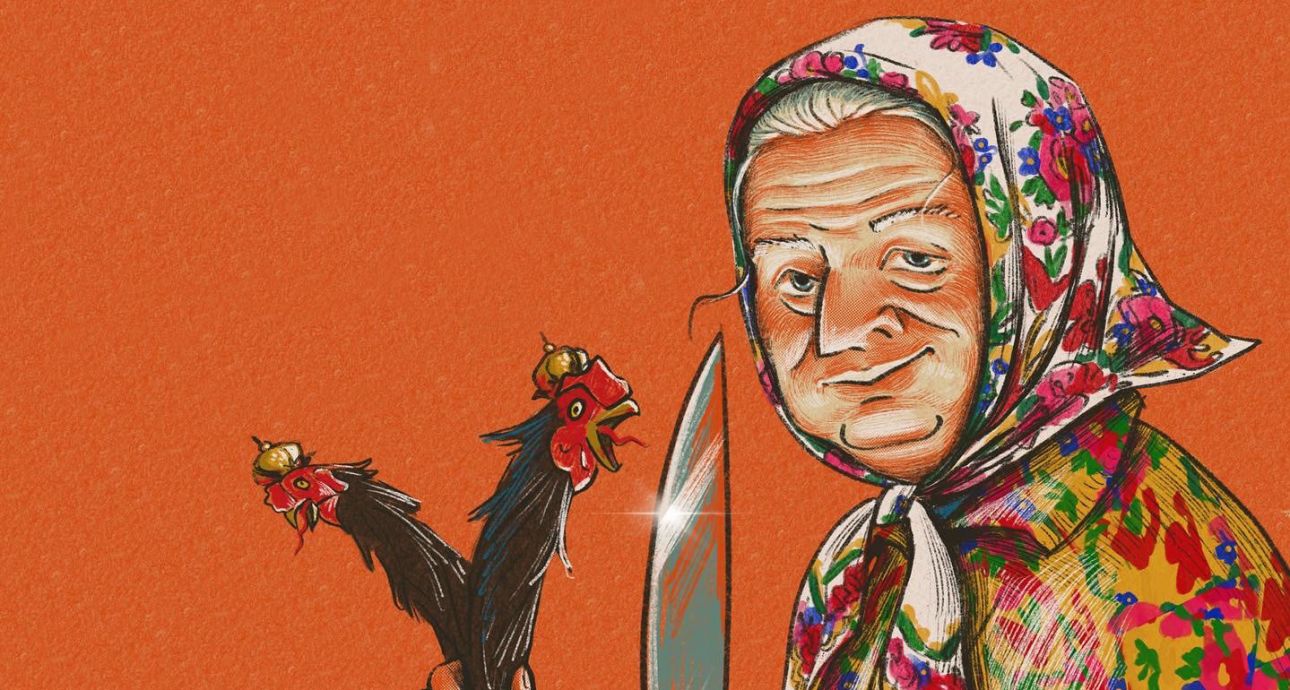
From icons to graphics: Sophia Suliy’s portfolio

A painter/illustrator and graduate of the Lviv National Academy of Arts living and working in Lviv.
— Before the war, I was more into painting and exhibitions than illustration. Despite having two book designs in my portfolio by then, I didn’t take myself seriously as an illustrator. I felt the quality of my work was too low to call myself a professional. I didn’t focus on this direction until 2022 — illustrations have become my wartime diary where I document my emotional state. What’s important is my pieces resonate with people. And I don’t care if I’m a professional illustrator or not. I just love what I do.
Alice in Wonderland, with illustrations by Vladyslav Yerko, was my favourite book as a child. His illustrations are detailed and beautiful, and the little me took great interest in studying pictures full of fine details. Perhaps, that was why I bought a basic graphics tablet and started learning Photoshop from free video tutorials during my Academy years. This was how I studied illustration, which brought me into art.
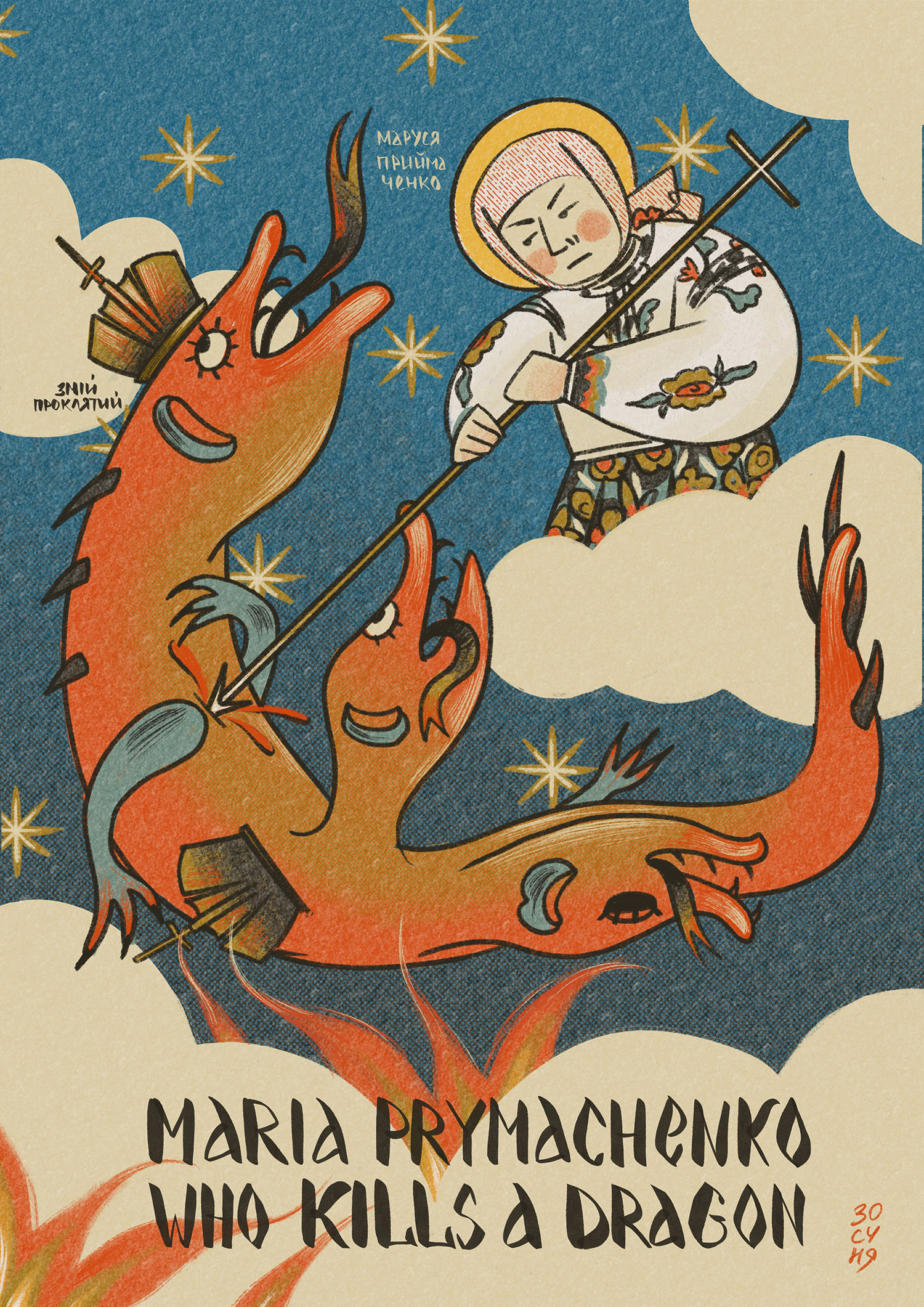
While at college, I attended the Radruzh Iconography School of the Ukrainian Catholic University. I discovered various icon painting techniques there, like cross-hatching with egg tempera, a paint prepared by mixing a pigment with egg yolks and beer or vinegar. I still use this technique in my work as well as the iconographic palette: red, blue, and yellow. In general, there are more similarities between icons and illustrations (and even comics) than one might think. These are all means of the artist’s communication with viewers.
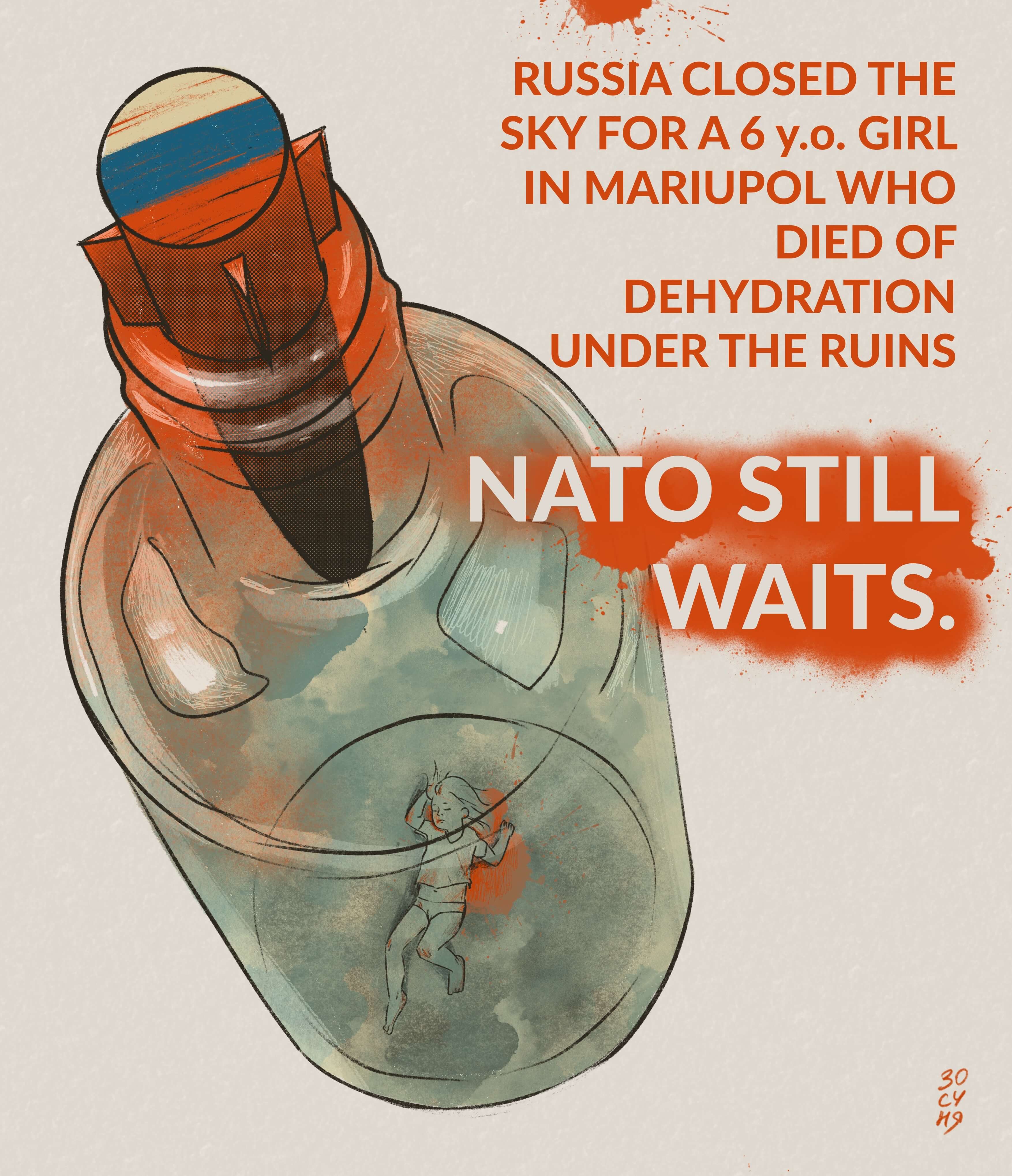
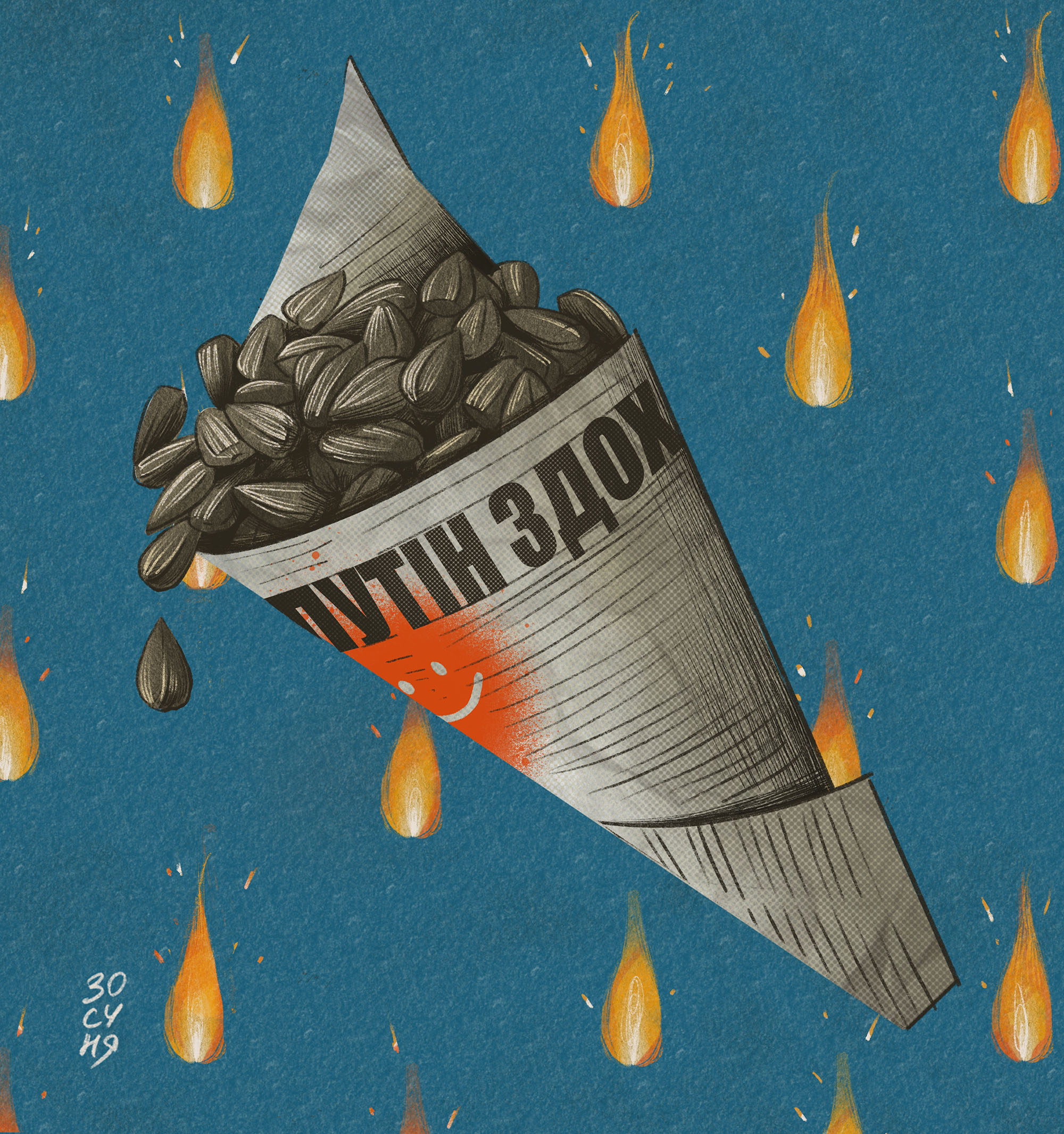
PUTIN DEAD
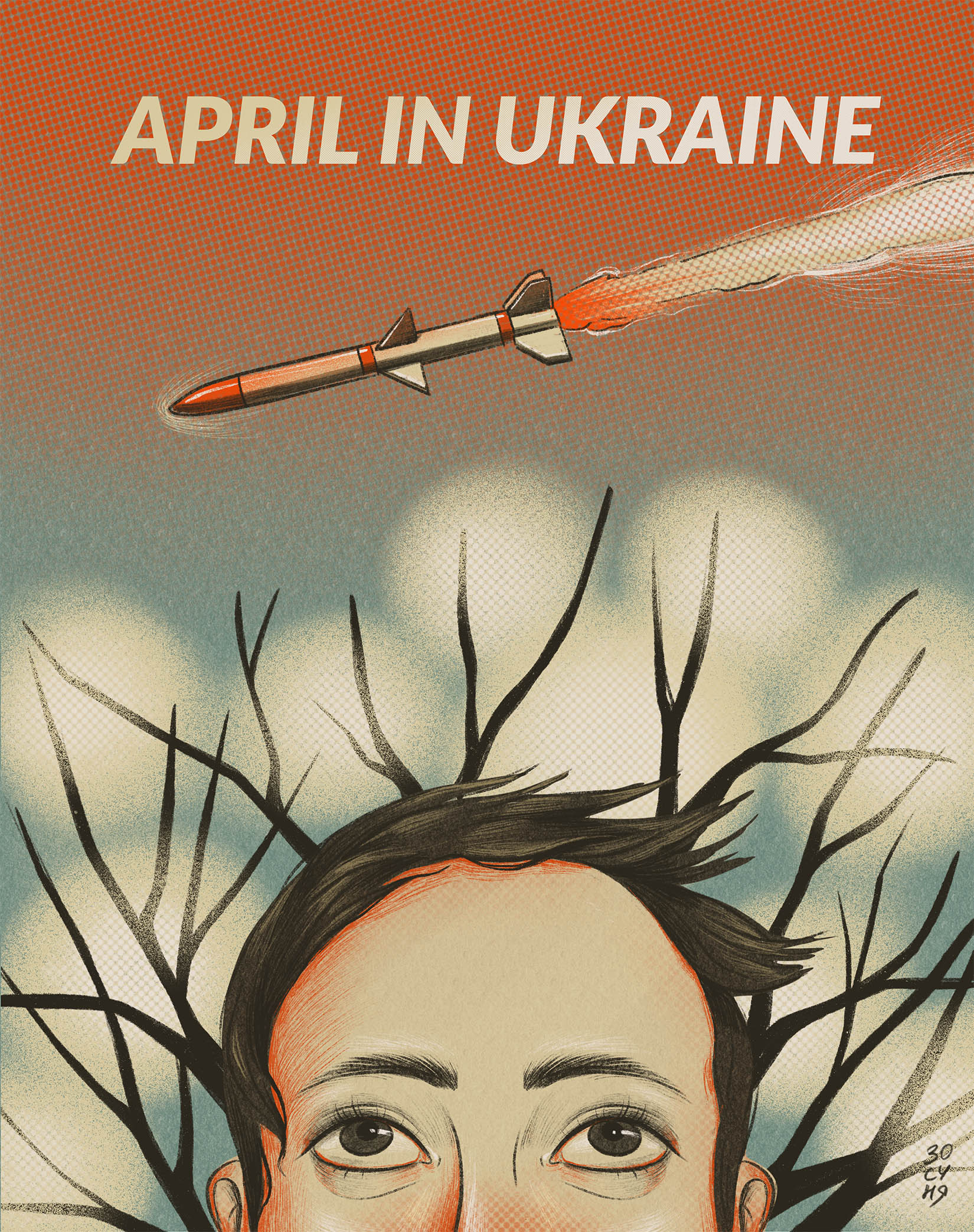
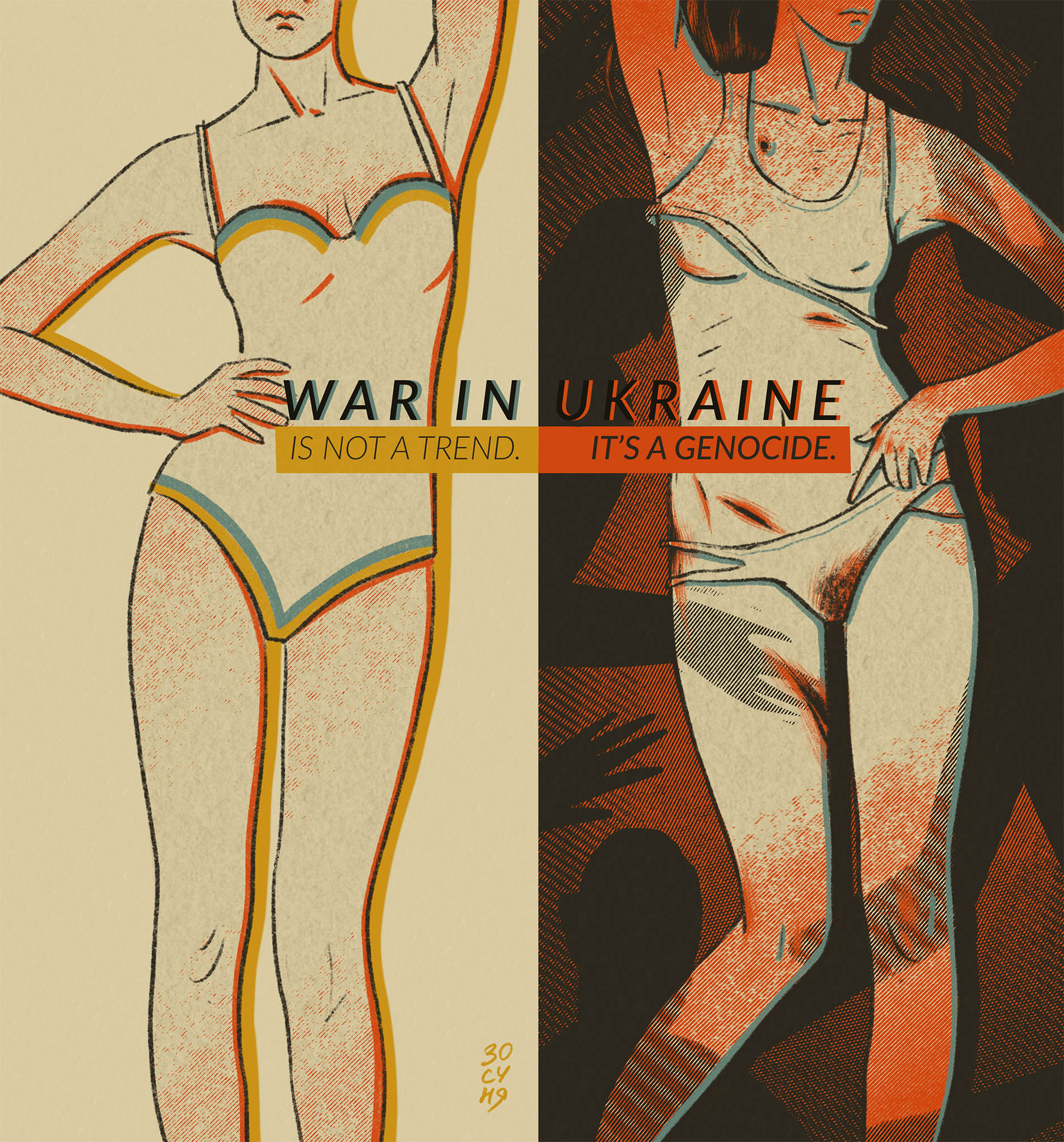
In the first days of the war, I was overcome with wild enthusiasm. A cocktail of anger and aggression was flowing through my veins. I yearned to work, making an illustration for every news story I read. Sometimes, I read the news before bed but then ended up drawing instead of sleeping. It could be a sublimation of sorts. Some write, do manual labour, or join the army, and I found an outlet for my feelings in drawing.
In the first weeks of the war, I set up an open archive, letting anyone download and use my works in it free of charge. As a result, my pieces ended up on the big screen during a charitable concert in Warsaw. I felt nothing special while watching it, but it sure was nice. After the event, the organizer said people were in tears.
Now people buy my works via Instagram or the Artists Against War initiative. Also, those who purchase my pictures sometimes turn them into bag and t-shirt prints.
The illustrations I made for an NFT collection are my favourite. I managed to sell a few at the time. However, many also took Instagram by storm: the Drone-Killer jar of pickled tomatoes, the Ukrainian Farm Forces tractor, and The Cherry Orchard by the House. There are also less popular illustrations that I love, like the Herbarium series, in which there is a picture with a barberry shrub and bullet casings. Those are minimalistic works. They might not have earned me followers but still carry a part of me as an icon painter.
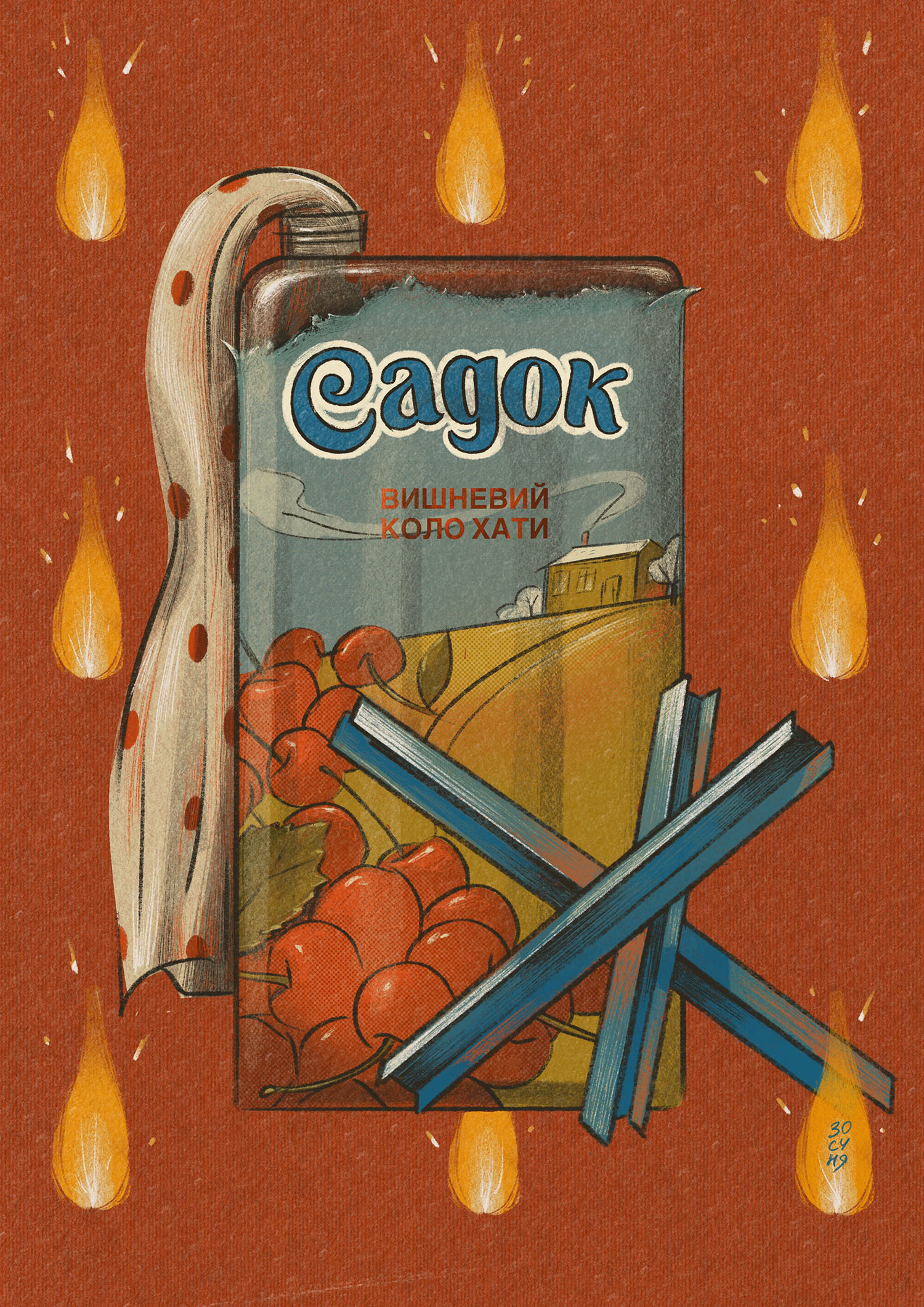
Cherry Orchard by the House (this one is a play on the first line of the eponymous poem by Taras Shevchenko and the packaging design of Sadochok, a popular Ukrainian juice brand, in the context of the war — Translator’s note)
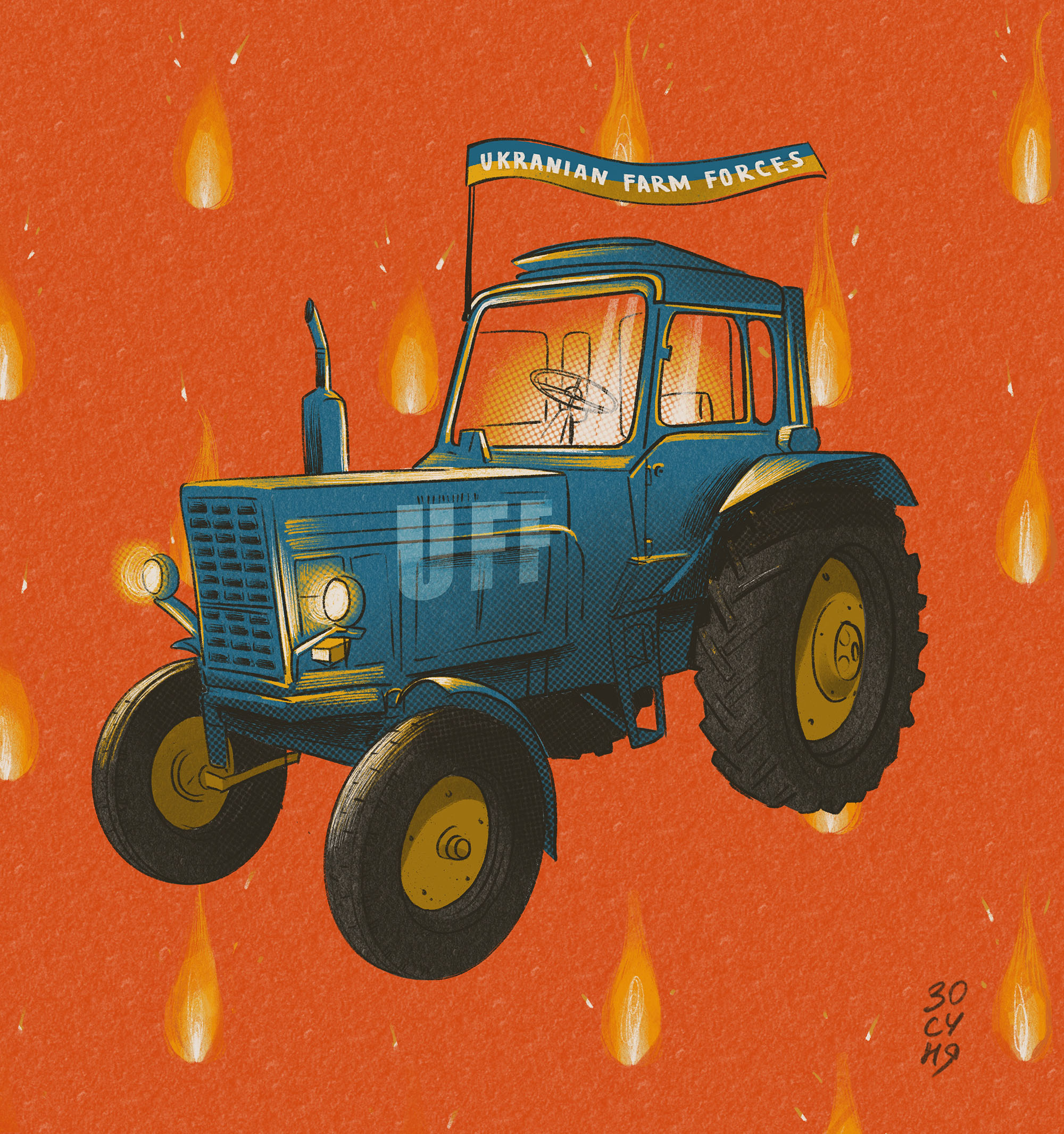
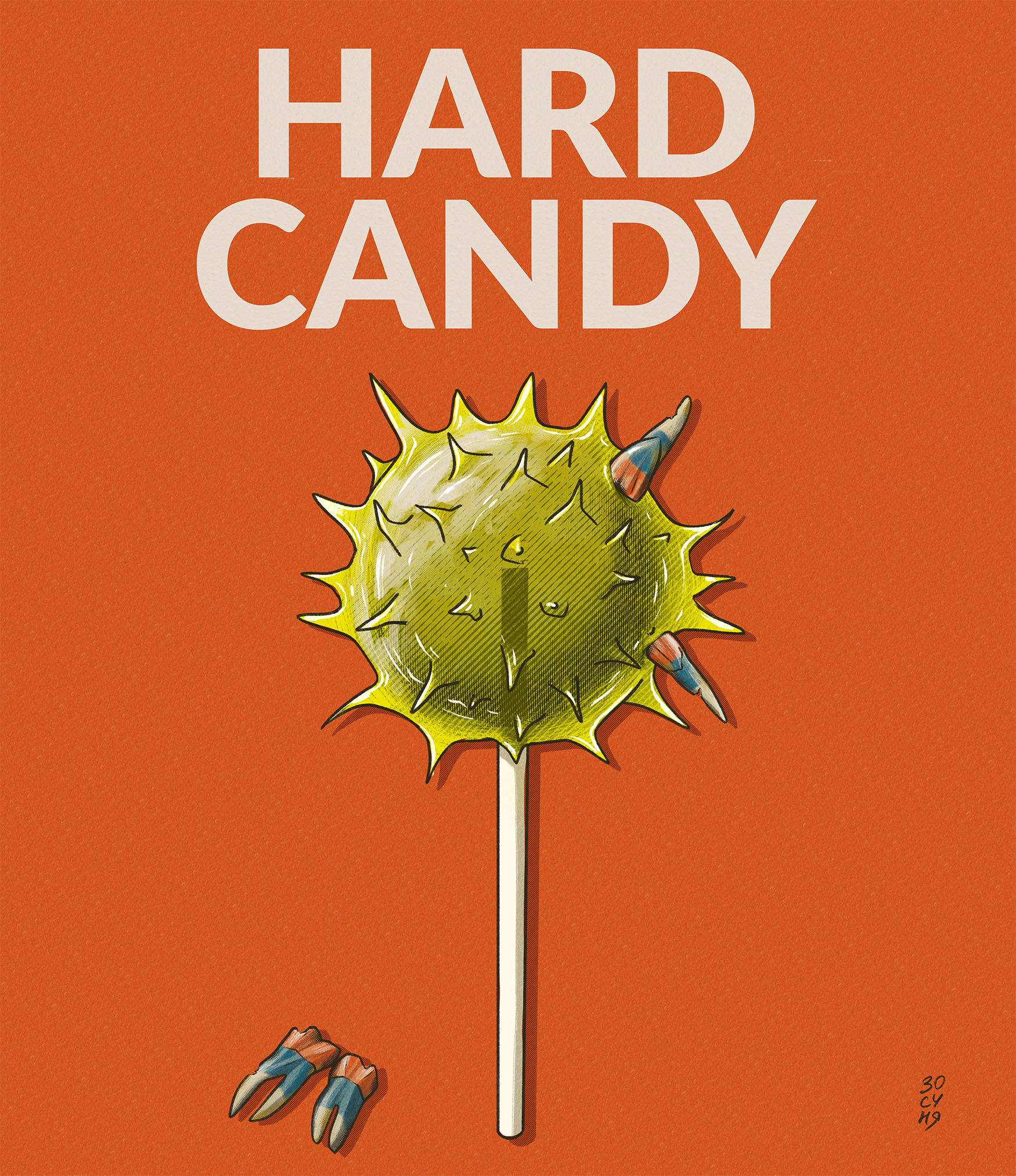

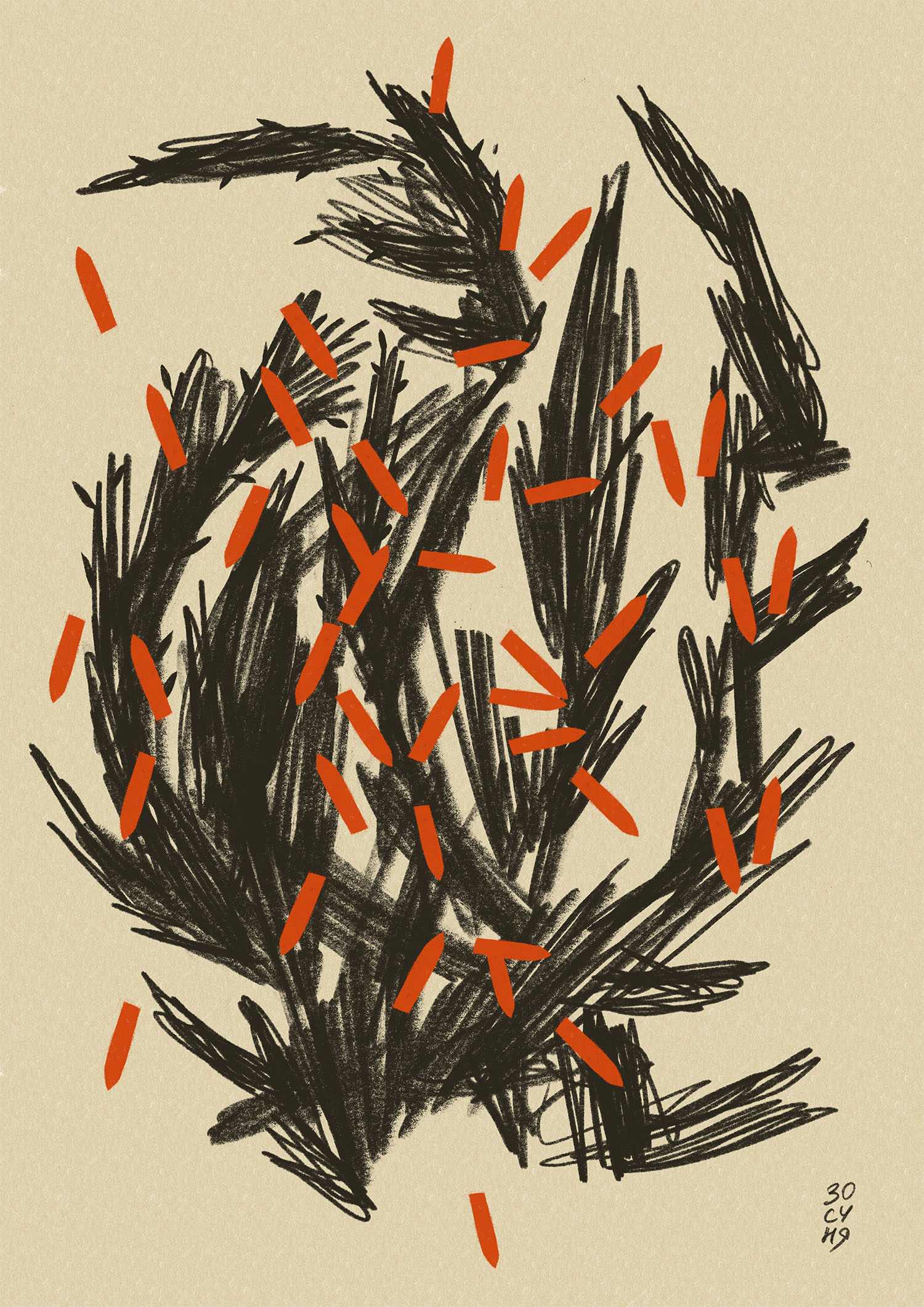
Two works from the Herbarium series
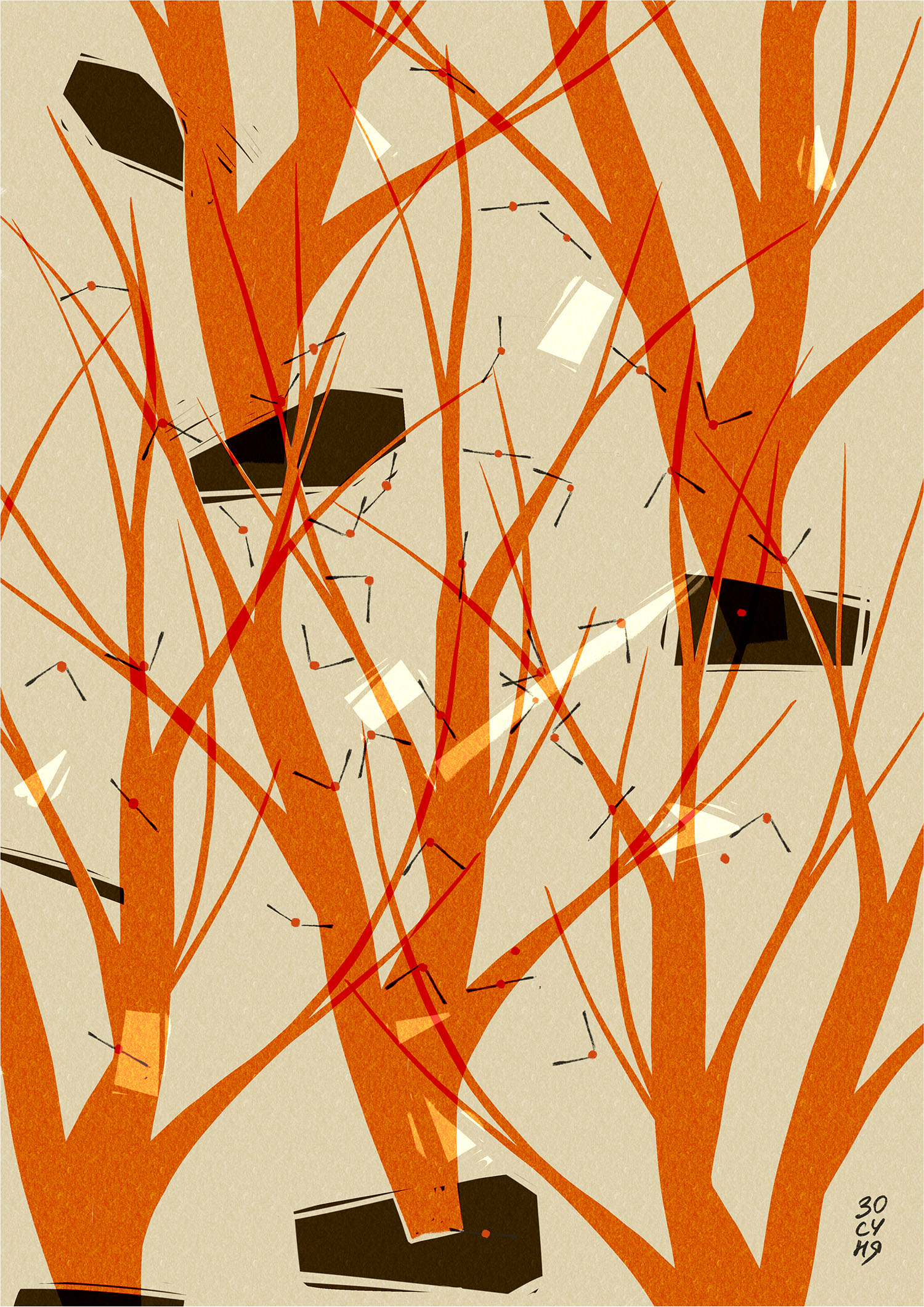

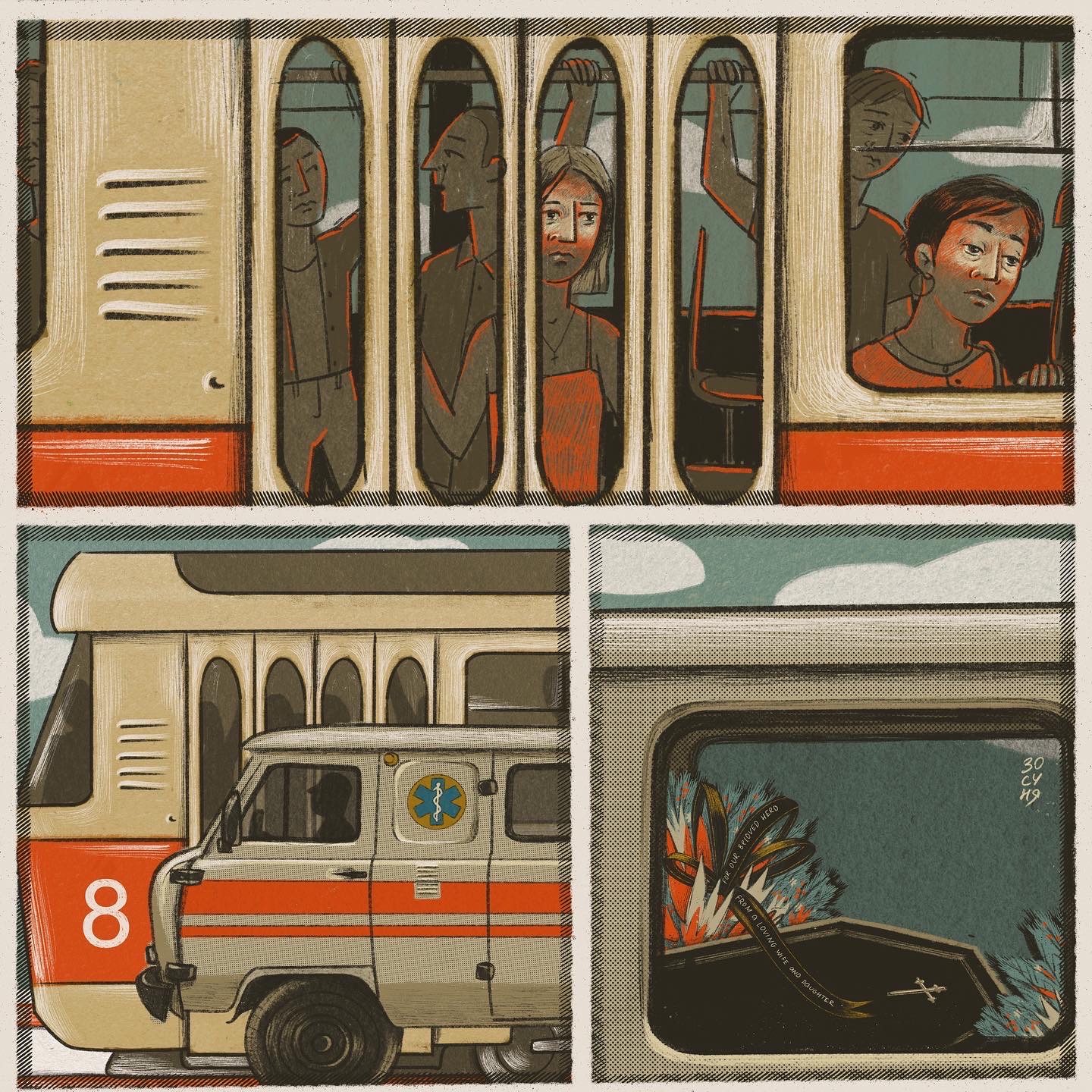
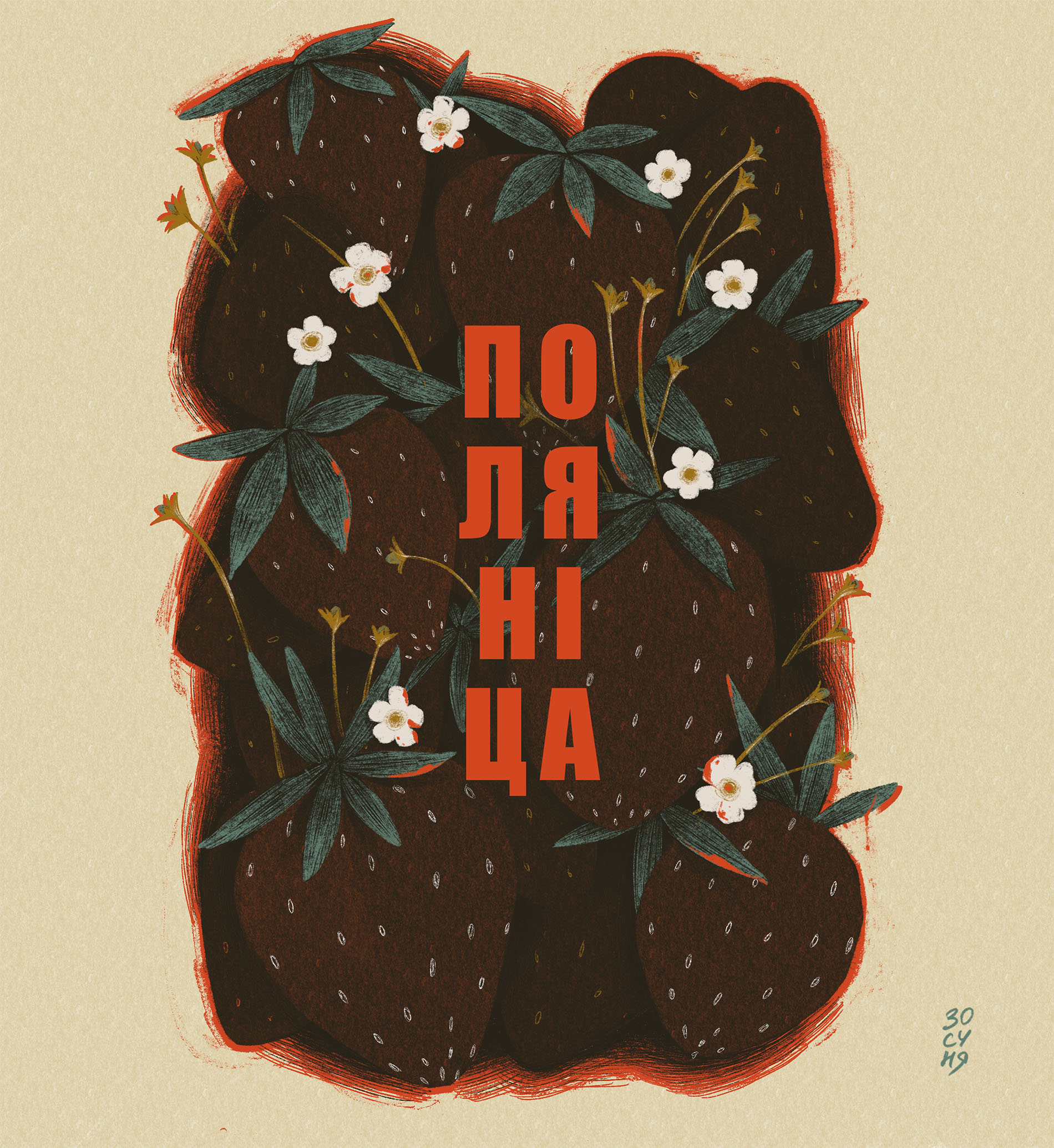
POLYANITSA (the word “palianytsia” became a shibboleth in the Ukrainian language during the war and was used to identify Russian invaders on multiple occasions. Also, the way Russian propagandist media mangled the word and confused it with “polunytsia” (Ukrainian for “strawberry”)became a meme in its own right—Translator’s note).
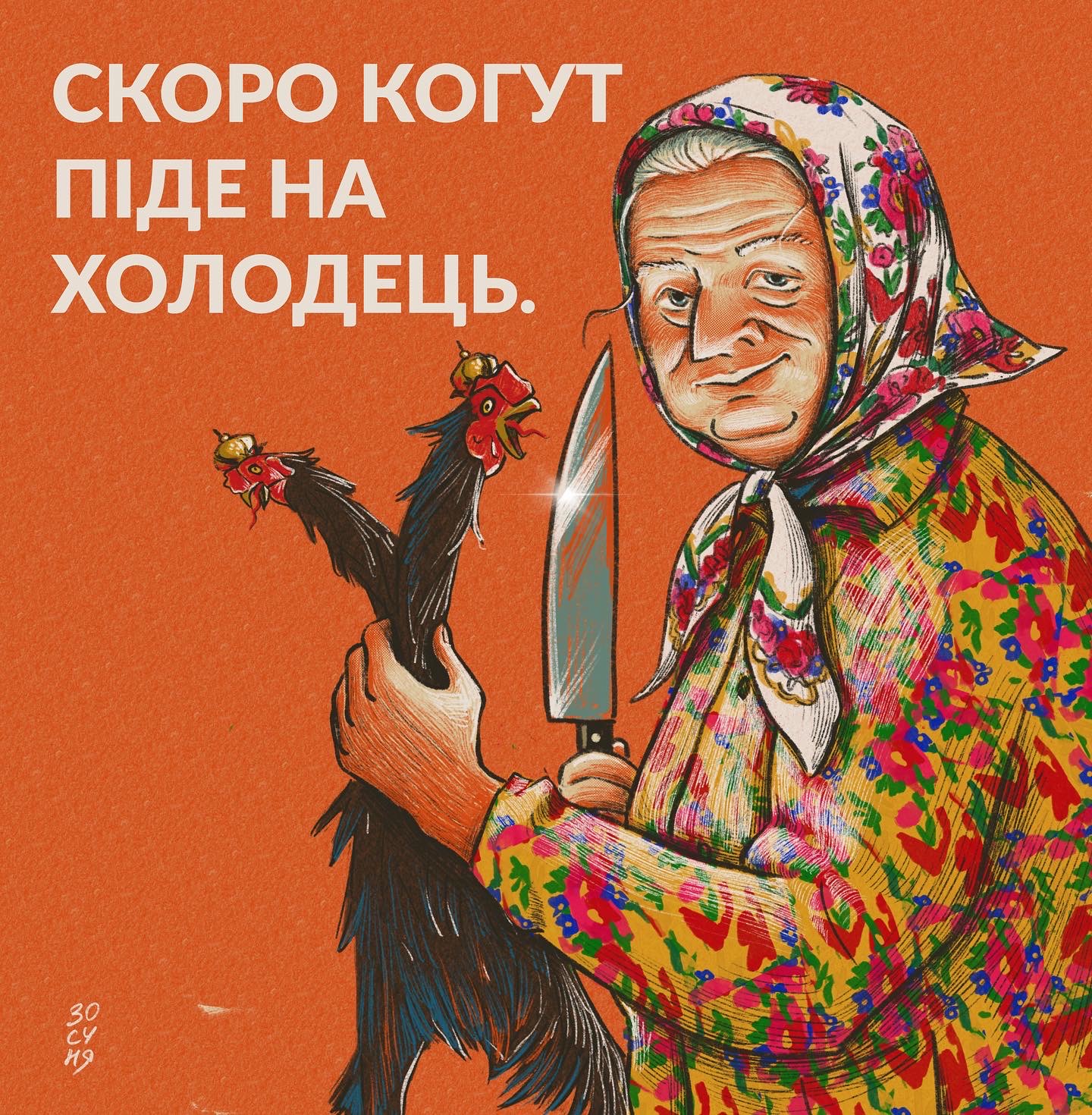
Soon this cock goes in aspic
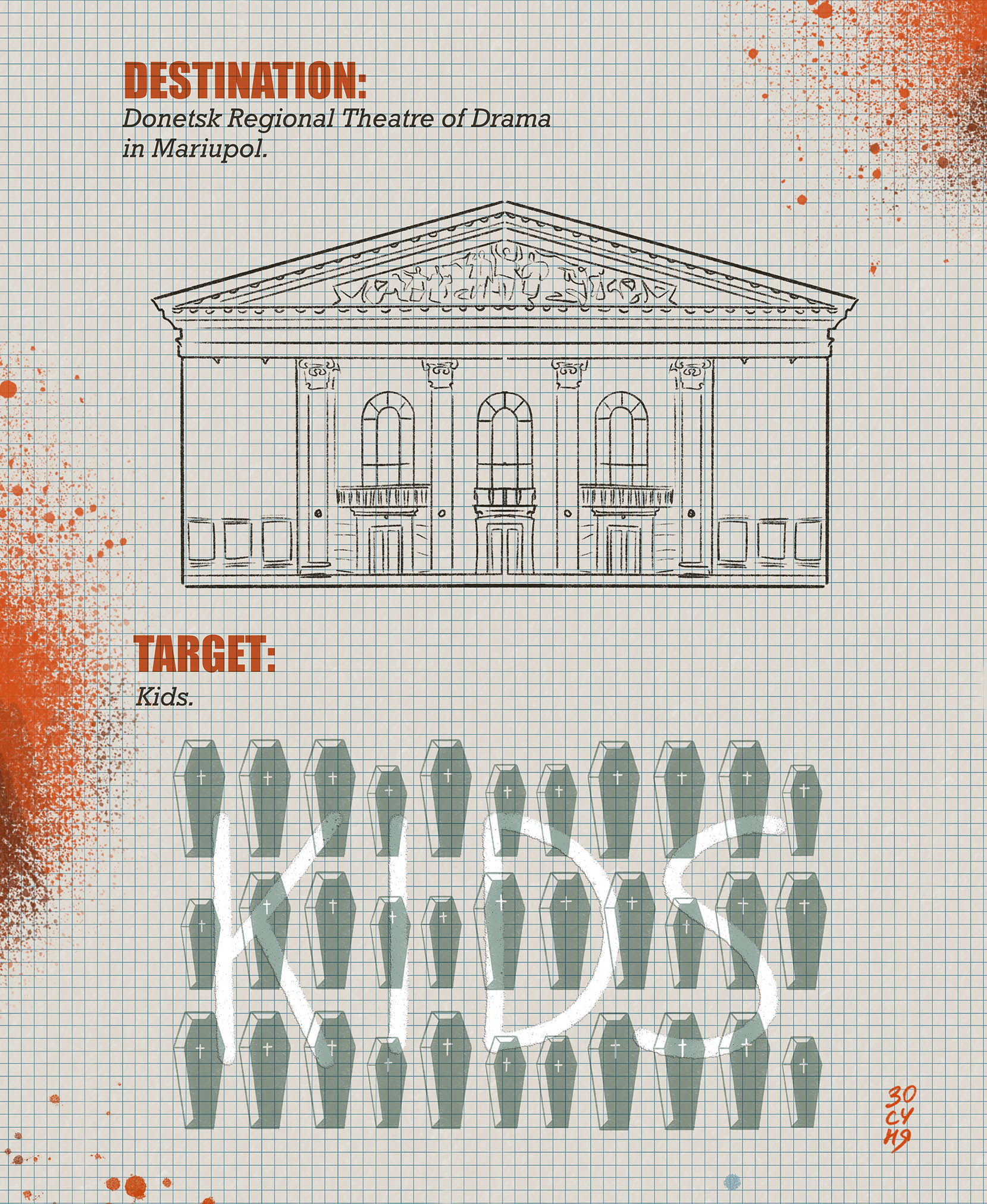
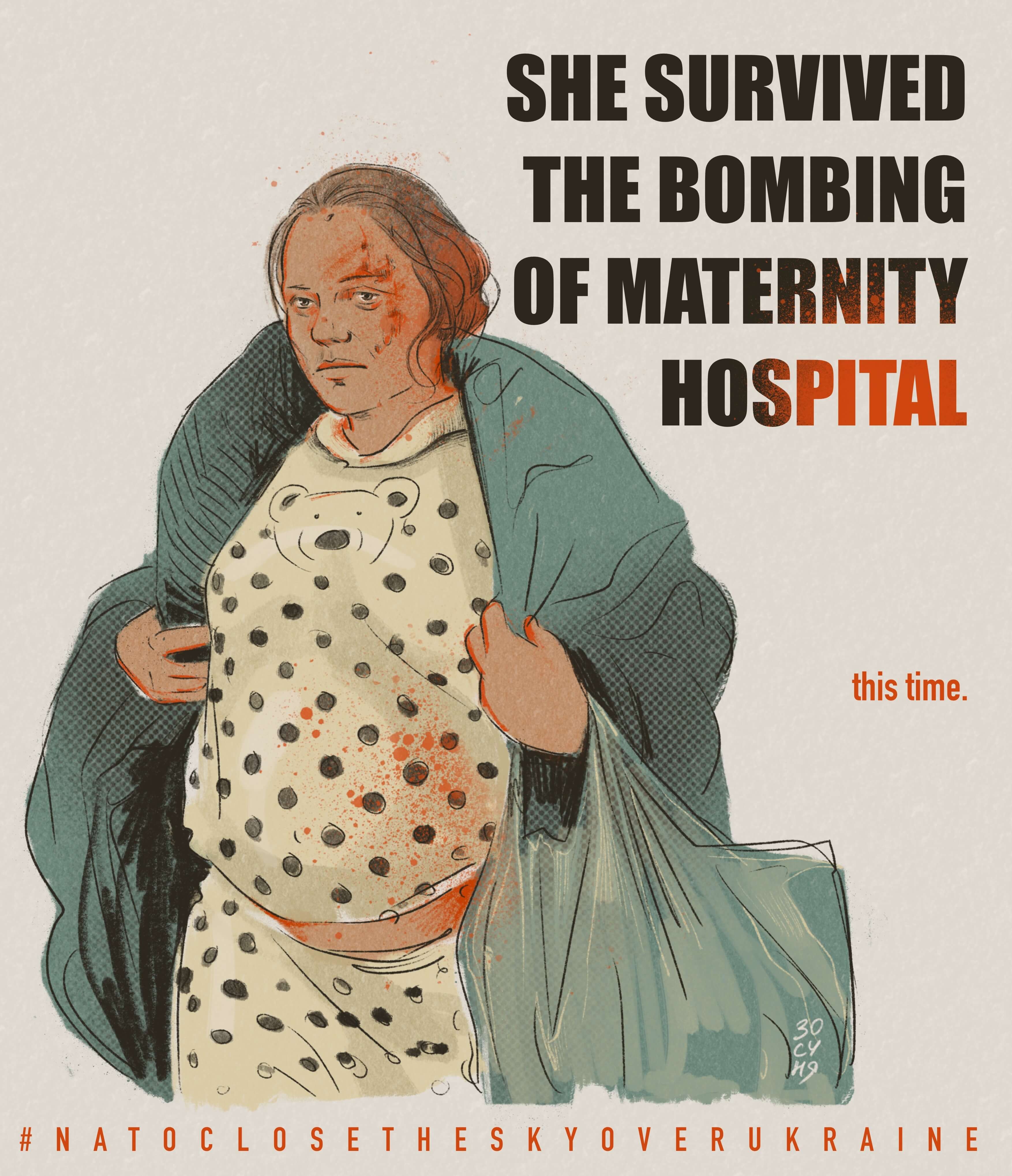
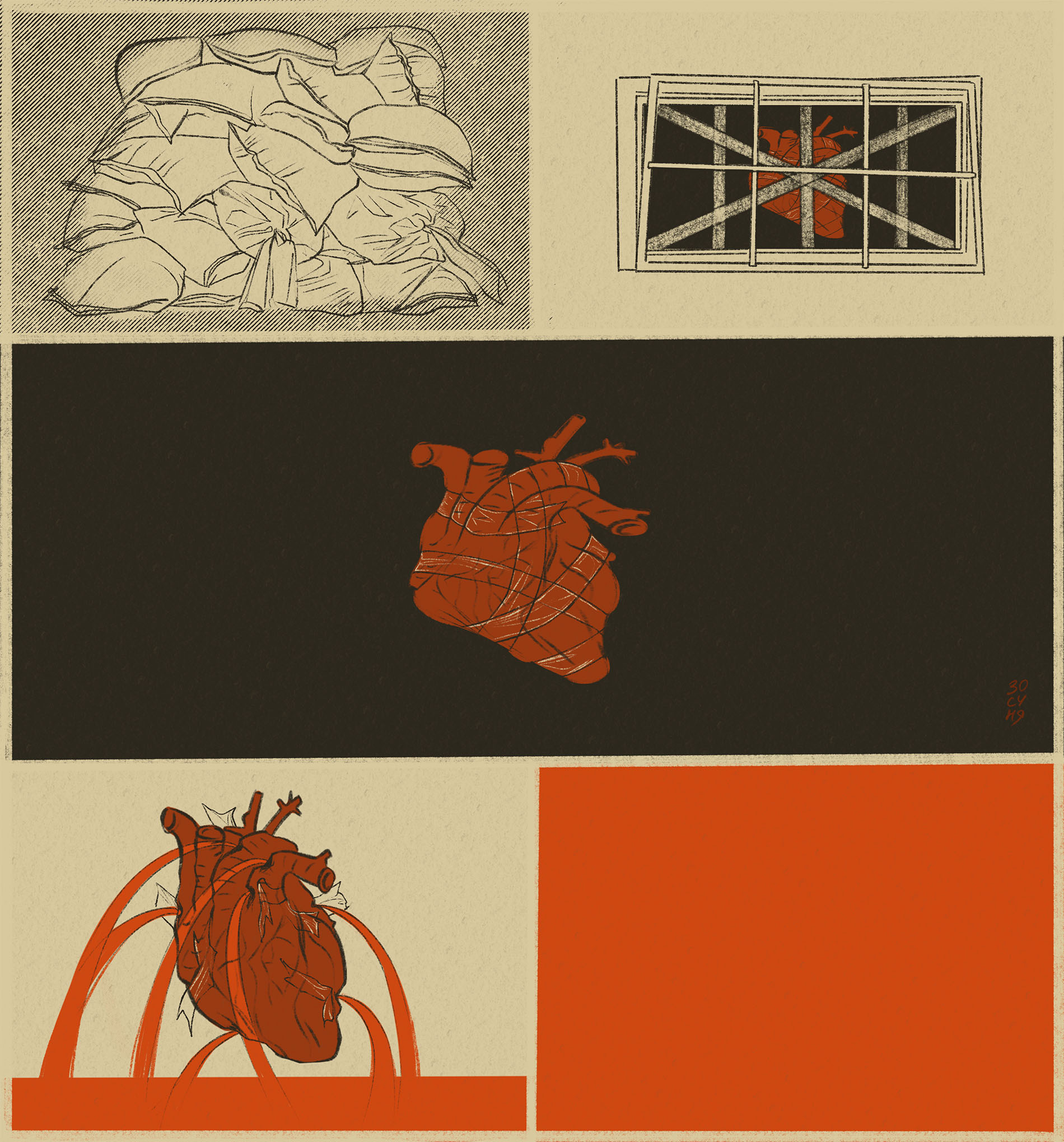
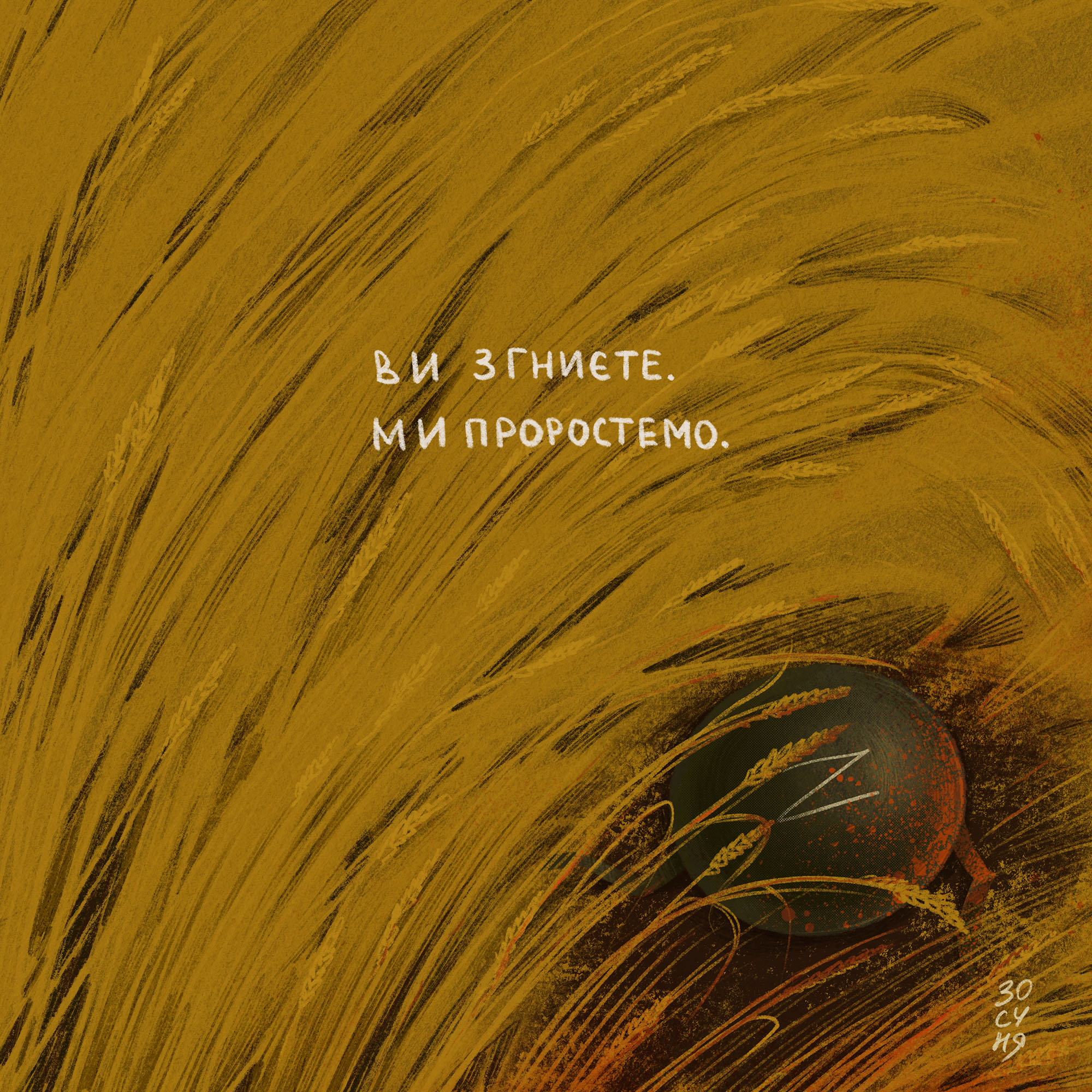
You will rot. We will thrive.
New and best
